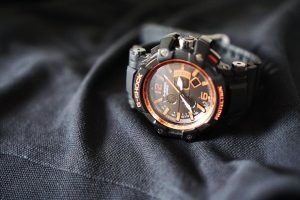Basic of Night Vision Optics that You Must Know

First of all, you must understand what a night vision device is. It is nothing but a type of the optical devices, which allows the ability to see images in the different levels of the light that approaches to complete darkness. The night vision goggles were first used in World War II, but at the time, it was not in high use.
There had been regular advancement in the technology of the night vision goggles. And every time you can find enhancement in the performance of this equipment’s. Moreover, nowadays, you can also find some of the cheapest night vision goggles. Now you might be thinking that how can one see even during the low light. So the answer to this is those night goggles picks up the minimal light which exists around the objects and then it amplifies the same. For instance, if during the nighttime moon is seen clearly in the sky, then there are more chances that you can see the object more clearly. Apart from this, there are some other factors too like if there exists any sort of infrared beam which may not be visible with the naked eye.
Even though the night vision goggles were first designed for the military purpose but in the recent times, it is being used for finding the practical applications likes the hunters, boaters, campers, farmers and many others. You will be amazed to know that monocular and binocular are intended to be used while keeping it to your eye. This helps you in getting an effective vision during the nighttime. In addition, you will come across some new models of night optics, which include proximity detectors that help to turn the device on or off on their own. The night vision goggles are usually worn around the head with the help of the strap; sometimes, it has been noticed that the goggles are attached to the helmet.
You must not be having any idea that there are in total of four generations in the night vision optics. And each generation had some extra features in them.
- The first generation, which is also known as Generation I optics use to make use of the photo cathode tube, and it also, provides good performance at a reasonable cost.
- The next generation, known as Generation II, adds a micro channel plate. This helped to decrease the image distortion to a large extent and at the same time, increases the light amplification.
- In the Generation III arsenide was added to the intensifier tube which helps in getting a brighter as well as sharper image.
- The most recent generation in the world of night vision optics is the Generation IV. They make use of the latest technology in order to provide a low light level performance.
How Night Vision Optics Work
Night vision optics are sophisticated devices that allow individuals to see in low light or complete darkness. They use advanced technology to amplify available light or detect the heat signatures of objects and create a visible image for the user.
Image Intensifiers
Image intensifiers are the most common type of night vision optics. They work by collecting and amplifying available light, such as moonlight or starlight, and converting it into a visible image. The device consists of several components, including an objective lens, a photocathode, an image intensifier tube, and a phosphor screen.
- Photocathode
The photocathode is a specialized surface that converts light into electrons. The type of photocathode used can affect the sensitivity, resolution, and color of the resulting image. For example, Gallium Arsenide (GaAs) photocathodes are used in high-end night vision devices as they provide high sensitivity and resolution.
- Image Intensifier Tube
The image intensifier tube is the heart of the night vision device. It takes the electrons from the photocathode and amplifies them using a process called electron multiplication. The tube consists of several components, including a microchannel plate and a voltage power supply.
The microchannel plate (MCP) is a thin glass plate with thousands of tiny holes, each lined with a layer of conductive material. As the electrons pass through the holes, they collide with the conductive material, creating more electrons. This process, known as electron multiplication, amplifies the original signal by up to 50,000 times.
- Phosphor Screen
The phosphor screen is the final component of the night vision device. It converts the amplified electrons back into visible light, creating a visible image for the user. The phosphor screen is typically green, as the human eye is most sensitive to that color.
Thermal Imaging Devices
Thermal imaging devices detect the heat signatures of objects and create an image based on the temperature differences. They work by detecting the infrared radiation emitted by objects and converting it into a visible image.
- Infrared Detection
The device uses a specialized detector, such as a microbolometer or a thermopile, to detect the infrared radiation emitted by objects. The detector creates an electrical signal that is processed by the device’s electronics.
A microbolometer is a tiny sensor that detects changes in temperature. It consists of a grid of pixels, each of which contains a small piece of material that changes resistance as it heats up or cools down. The changes in resistance are converted into an electrical signal and processed to create an image.
- Image Processing
The electrical signal is processed to create an image based on the temperature differences between objects. The device may use algorithms to enhance the image quality and remove noise. The resulting image is typically displayed on a screen or eyepiece, allowing the user to see in complete darkness.
- Display
The display of thermal imaging devices is typically grayscale, as it is based on the temperature differences of objects rather than their visible color. Warmer objects appear brighter, while cooler objects appear darker.
Advantages and Disadvantages of Each Type
Image intensifiers are generally better at providing detailed images in low light conditions, but they can be affected by bright lights or lasers. Thermal imaging devices are better at detecting hidden objects and can work in complete darkness, but they may have lower resolution and may not be able to detect certain materials. The choice of night vision optics depends on the intended use and personal preference of the user.
Recommended Reading:
Applications of Night Vision Optics
Night vision optics have a wide range of applications in various industries and activities. Here are some common applications of night vision optics:
- Military: Night vision optics are widely used by military personnel for navigation, surveillance, and reconnaissance operations. They can provide a significant advantage by allowing soldiers to operate covertly and navigate in complete darkness.
- Law enforcement: Police officers often use night vision optics for surveillance, tracking suspects, and conducting search and rescue operations in low light conditions.
- Hunting: Night vision optics are popular among hunters, as they allow them to track and hunt animals in low light conditions. They provide an advantage by allowing hunters to see animals that would be difficult to spot with the naked eye.
- Security: Used for security purposes, such as monitoring sensitive areas, protecting assets, and detecting intruders in low light conditions.
- Outdoor activities: Night vision optics are popular among outdoor enthusiasts, such as campers and hikers, who need to navigate in low light conditions.
- Aviation: Night vision optics are used by pilots for navigation, obstacle avoidance, and to identify other aircraft in low light conditions.
- Marine navigation: They are also used for marine navigation, such as navigating through narrow channels or in poor weather conditions.
Night Vision Optics Benefits
- Amplifies available light or detects heat signatures
- Increased safety in low light or darkness
- Enhanced situational awareness
- Improved performance in low light conditions
- Saves time and energy by reducing need for additional lighting
- Versatile for various applications
- Cost-effective investment for profession or hobby
- Provides clear and detailed view of surrounding environment
- Reduces risk of accidents and injuries
- Critical tool for law enforcement, military personnel, hunters, and outdoor enthusiasts
- Can be used for navigation, surveillance, hunting, and more
- Enhances efficiency of operations in low light conditions
- Can improve overall safety and performance
- Available in different types and styles to suit different needs
- Allows for better decision-making in critical situations.
Even though you can find night vision scope of Generation I commercially but the image quality of them is very less compared to the Generation III and Generation IV device. The best thing about the latest generation night vision scope is that they enable a feature called automatic shut off function and also the digital control. This is very much useful when there is a sudden exposure of bright light; this also helps in protecting the vision of the user. You can easily get a pair of the night vision goggles, but before buying them, you need to ensure that your purpose of buying is served.






